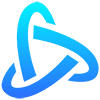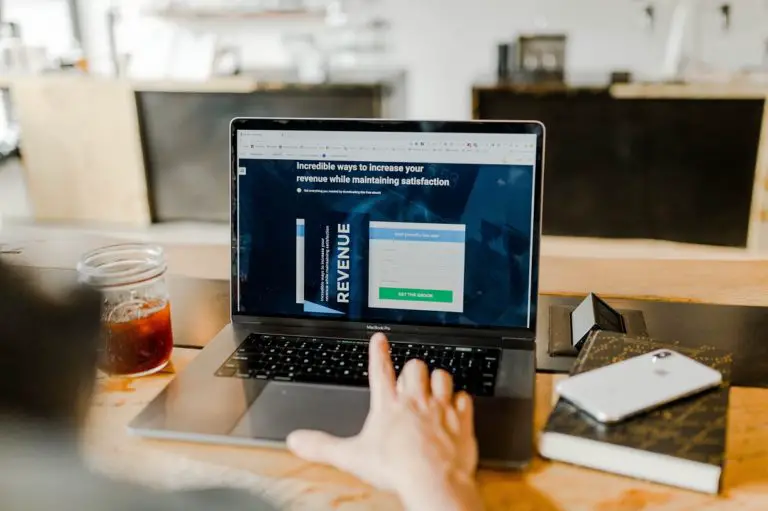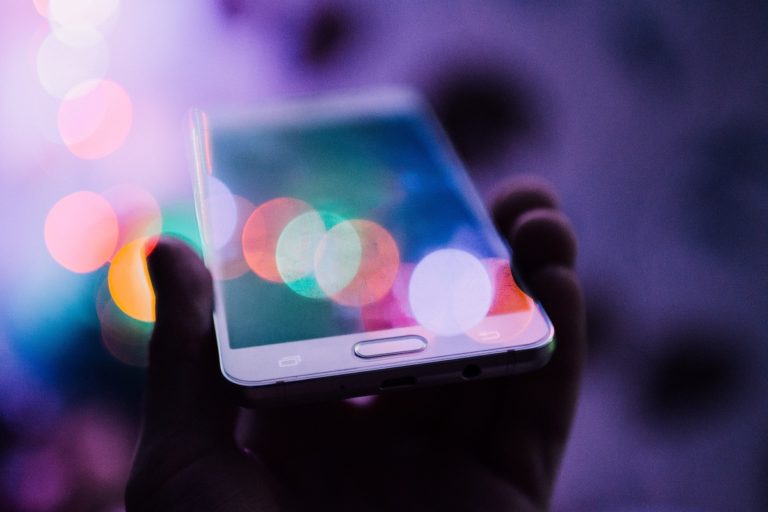Crafting a Stellar Acknowledgment Email with Examples
In the ever-evolving landscape of digital communication, mastering the art of acknowledgment emails is a skill that can elevate your professional interactions. Acknowledgment emails go beyond a simple confirmation of receipt; they are a way to express gratitude, build relationships, and ensure effective communication. In this comprehensive guide, we will explore the importance of acknowledgment emails, break down the key elements, and provide real-world examples for various scenarios.
Understanding the Significance of Acknowledgment Emails
Acknowledgment emails are not just about confirming that you received a message; they are a fundamental aspect of professional etiquette and communication. When you acknowledge an email, you are signaling to the sender that their message has been received, understood, and is being acted upon. This small yet significant gesture sets the tone for a positive and respectful exchange, whether in a professional or personal context.
Why are Acknowledgment Emails Important?
Acknowledgment emails play a pivotal role in effective communication and are essential for several reasons:
1. Building Trust: Acknowledging emails promptly builds trust between the sender and the recipient. It shows that you are attentive and take communication seriously. Trust is a foundational element in any relationship, and prompt acknowledgment contributes to its establishment and maintenance.
2. Setting Expectations: Acknowledgment emails can set expectations for what comes next. Whether it’s confirming receipt of a document or outlining the next steps in a project, it provides clarity. This proactive approach helps in managing expectations and ensures that all parties involved are on the same page.
3. Expressing Professionalism: In the professional world, acknowledging emails is a hallmark of professionalism. It demonstrates that you value the sender’s time and effort. This level of courtesy is particularly important in business interactions, where maintaining a professional image is crucial.
4. Fostering Relationships: Gratitude expressed in acknowledgment emails goes a long way in fostering positive relationships. It adds a personal touch to the digital interaction. Acknowledging the effort and time invested by the sender creates a positive impression and contributes to a collaborative and respectful working relationship.
5. Enhancing Communication Flow: Acknowledgment emails contribute to the smooth flow of communication. When you promptly acknowledge receipt of an email, it signals to the sender that their message has successfully reached you. This reassurance encourages an open and ongoing dialogue, ensuring that both parties are actively engaged in the conversation.
6. Mitigating Misunderstandings: Timely acknowledgment can help prevent misunderstandings. In situations where a sender might be waiting for confirmation or a response, a prompt acknowledgment signals that their message has been received and is in the process of being addressed. This can prevent unnecessary follow-up inquiries and ensure a smoother communication flow.
7. Demonstrating Accountability: Acknowledging emails showcases a sense of accountability. It communicates that you take responsibility for managing your inbox and responding to messages in a timely manner. This accountability is especially crucial in professional environments where reliability and efficiency are highly valued.
8. Streamlining Work Processes: Acknowledgment emails contribute to the overall efficiency of work processes. Confirming receipt of important information or requests streamlines subsequent actions. For example, in a project management scenario, acknowledging receipt of project updates can trigger the next phase of tasks, ensuring a seamless workflow.
9. Building a Reputation for Reliability: Consistent acknowledgment of emails helps in building a reputation for reliability. When colleagues, clients, or partners know that you promptly acknowledge and act on their communications, they are more likely to view you as someone who can be relied upon. This reputation is valuable in professional relationships.
10. Meeting Customer Expectations: In customer-facing scenarios, acknowledgment emails are vital in meeting customer expectations. When customers or clients reach out with inquiries, issues, or requests, a prompt acknowledgment assures them that their concerns are being attended to. This contributes to a positive customer experience and can impact customer loyalty.
11. Improving Team Dynamics: Within a team, acknowledgment emails contribute to improved dynamics. Acknowledging the contributions, suggestions, or queries of team members fosters a sense of collaboration and mutual respect. It encourages a culture where everyone’s input is valued.
12. Adapting to Remote Work Culture: In the era of remote work, acknowledgment emails have gained even more significance. With team members dispersed across different locations, acknowledgment becomes a vital tool for staying connected. It helps remote teams maintain a sense of cohesion and ensures that everyone feels heard and acknowledged.
In essence, acknowledgment emails are not just about politeness; they are strategic tools for effective communication, relationship-building, and the overall success of professional endeavors. The importance of these emails extends beyond the immediate act of confirming receipt; they contribute to the foundational elements that drive positive workplace dynamics and successful collaborations.
The Four Essential Steps of Crafting an Acknowledgment Email
Crafting an effective acknowledgment email involves a thoughtful process. Here are the four essential steps to master this art:
Step 1: Recognition of the Received Email
The journey begins with recognizing the received email. As soon as an email lands in your inbox, it’s crucial to acknowledge its receipt. This initial acknowledgment sets the stage for a respectful and professional conversation. It’s like extending a virtual handshake, signaling that you are aware of the sender’s message.
Example
Subject: Acknowledging Receipt of Your Email
Hi [Sender’s Name],
I’ve received your email regarding [specific details]. Thank you for reaching out. I’ll review the content and get back to you shortly.
Best regards,
[Your Name]
Step 2: Responding and Confirming Receipt
Moving beyond recognition, the next step involves responding and confirming receipt. This phase goes beyond a simple acknowledgment; it assures the sender that not only has the email been received, but its contents have been understood. It’s about giving the sender confidence that their message is in safe hands.
Example
Subject: Confirmation of Document Receipt and Next Steps
Hi [Sender’s Name],
Thank you for sending over the [document details]. I confirm the receipt of the documents as of [insert date]. Our team will carefully review the content, and we’ll provide our response shortly.
Kind regards,
[Your Name]
Step 3: Expressing Gratitude
Gratitude is a powerful element in acknowledgment emails. It adds a human touch to the digital interaction. Even in professional settings, a simple expression of thanks can go a long way in fostering a positive relationship.
Example
Subject: Gratitude for Your Prompt Response
Hi [Sender’s Name],
I acknowledge with thanks your prompt response to my inquiry about [specific details]. Your timely communication is greatly appreciated, and I look forward to our continued collaboration.
Best regards,
[Your Name]
Step 4: Providing Follow-Up Information
The final step involves providing necessary follow-up information. This could include confirming the receipt of documents to outlining the next steps, and ensuring clear and straightforward communication.
Example
Subject: Follow-Up Information on Your Recent Inquiry
Hi [Sender’s Name],
Acknowledging the receipt of your recent inquiry about [specific details], I want to inform you that we will be conducting a thorough review. You can expect a detailed response from us by [insert timeline]. If you have any immediate questions, feel free to reach out.
Thank you,
[Your Name]
Essential Elements of an Effective Acknowledgment Email
Beyond the fundamental steps, certain key elements contribute to the effectiveness of an acknowledgment email. These elements, when combined, create professional and impactful communication.
1. Subject Line
The subject line serves as the first point of contact, briefly stating the email’s purpose. An effective subject line for an acknowledgment email communicates the acknowledgment’s purpose, enhancing the likelihood of prompt reading.
2. Immediate Recognition
Upon opening the email, the recipient should encounter an immediate acknowledgment of the received email. The opening line should recognize the email and confirm understanding, showcasing attentiveness and engagement.
3. Gratitude Expression
The body of the email should include an expression of gratitude. This element acknowledges the sender’s effort and adds a touch of warmth to the communication, reinforcing the relationship.
4. Follow-Up Information
After expressing gratitude, the email should provide relevant follow-up information. This could range from confirming document receipt to outlining the next steps, ensuring clear and straightforward communication.
5. Closing and Signature
A courteous closing and a professional signature add the final touches to the acknowledgment email. A polite closing, paired with your signature, leaves a positive impression and brings closure to the message.
Common Mistakes while Sending Acknowledgment Emails
Even in this seemingly straightforward task of sending acknowledgment emails, common mistakes can creep in, diminishing the effectiveness of your acknowledgment and potentially harming professional relationships. Let’s delve into some common mistakes to avoid when sending acknowledgment emails.
1. Delayed Responses: One of the cardinal sins of acknowledgment emails is a delayed response. Promptness is key when it comes to acknowledging emails. A delayed acknowledgment can send the wrong message, making the sender feel undervalued or their communication overlooked. To avoid this mistake, make it a practice to respond promptly, reinforcing the notion that their message is important and being attended to.
2. Generic or Impersonal Content: Sending generic or impersonal acknowledgment emails is another common misstep. A generic response lacks the personal touch that makes acknowledgment emails impactful. Instead of using a generic template, tailor your acknowledgment to the specific context of the email. Mention specific details from the email to show that it was read thoroughly and that you are engaged in the conversation.
3. Forgetting to Express Gratitude: While acknowledgment emails are about confirming receipt, they also present an opportunity to express gratitude. Forgetting to include a simple “thank you” can make your acknowledgment seem robotic and devoid of warmth. Acknowledging receipt with gratitude adds a human touch to your emails, fostering positive relationships and making the sender feel appreciated.
4. Lack of Clarity on Next Steps: Acknowledgment emails often set the stage for what comes next. Failing to provide clarity on the next steps can lead to confusion and misunderstandings. Whether it’s confirming receipt of documents or outlining the timeline for further actions, be explicit in your acknowledgment about what the sender can expect next. This helps in maintaining transparency and keeping the communication flow smooth.
5. Overlooking the Subject Line: The subject line is the first thing the recipient sees, and overlooking its importance is a common mistake. A vague or generic subject line may lead to the email being overlooked or not taken seriously. Craft a subject line that clearly conveys the purpose of the acknowledgment, making it easier for the recipient to understand the context without even opening the email.
6. Ignoring Automation Etiquette: While automation can streamline acknowledgment emails, ignoring etiquette in automated responses is a pitfall. Automated messages should still maintain a friendly and approachable tone. Avoid making them sound robotic or cold. Ensure that your automated acknowledgments align with your company’s tone and style, giving them a personal touch despite being automated.
7. Neglecting Proofreading: Typos and grammatical errors can significantly impact the professionalism of your acknowledgment emails. Neglecting proofreading might give the impression of carelessness or lack of attention to detail. Before hitting send, take a moment to review your acknowledgment for any errors. A polished and error-free email enhances your professional image.
8. Failure to Customize for Various Contexts: Not all acknowledgment emails are created equal. Acknowledging receipt of a job application is different from acknowledging payment or confirming the receipt of documents. Failing to customize your acknowledgment for various contexts can lead to misalignment with the sender’s expectations. Tailor your acknowledgment to fit the specific situation, demonstrating that you understand the nature of the communication.
9. Overusing Acknowledgment Emails: While acknowledgment emails are essential, overusing them can dilute their impact. If every email receives an acknowledgment, it may come across as excessive and insincere. Reserve acknowledgment emails for situations that genuinely warrant confirmation, such as important documents, significant updates, or critical communications.
Frequently Asked Questions on Acknowledgment Emails
How quickly should I send an acknowledgment email?
Ideally, as soon as possible. Promptness is key in acknowledgment emails to convey that the information or request is valued and being acted upon. However, it’s equally important to ensure the accuracy of the information provided while maintaining speed.
Should I include specific details in my acknowledgment email?
Certainly. Including specific details, such as the document’s title or the job role applied for, personalizes your email and assures the recipient that their email hasn’t disappeared into the digital void. Specifics enhance the effectiveness of your communication.
Can acknowledgment emails be automated?
Yes, acknowledgment emails can be automated using email automation software, especially for tasks like confirming online orders or job applications. Automation can save time while ensuring a prompt response. However, it’s crucial to maintain a personal touch in automated messages to avoid sounding robotic.
Conclusion: The Power of Acknowledgment
In conclusion, acknowledgment emails are more than routine responses; they are powerful tools for effective communication and relationship-building. The steps outlined, coupled with key elements and real-world examples, serve as a guide for crafting impactful acknowledgment emails in various scenarios. Whether in professional or personal interactions, the art of acknowledgment contributes to a culture of respect, trust, and transparent communication. Mastering this art will not only enhance your professional image but also contribute to positive and meaningful connections in the digital landscape.






